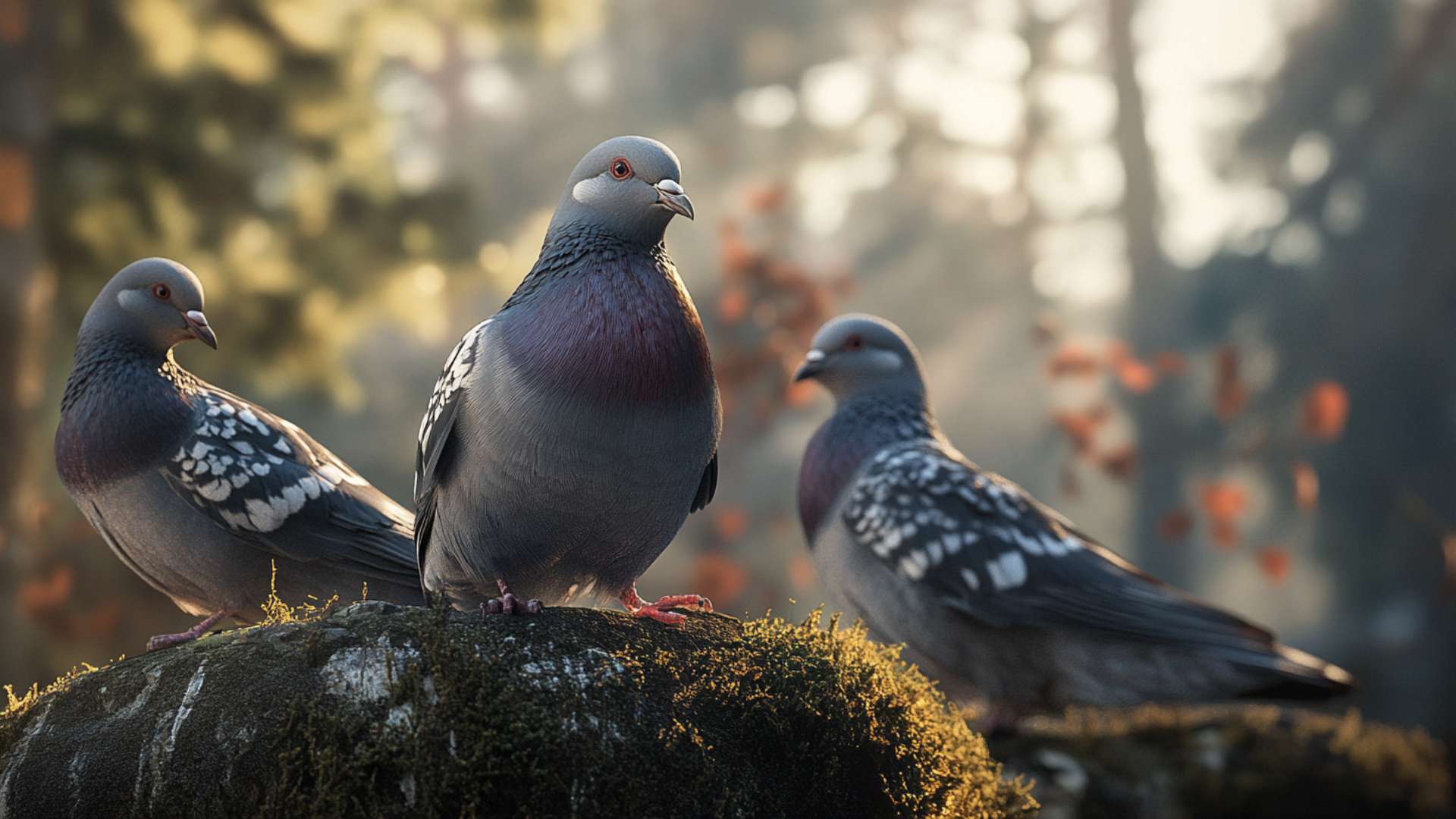Picture this: you’ve lovingly set up your bird feeder, filled it with delectable seeds, and eagerly awaited the arrival of a myriad of backyard birds. But alas, your vision of a picturesque scene is disrupted by the unruly intrusion of pigeons.
These plump and persistent creatures have made themselves at home in your feeding haven, causing quite the commotion. Fear not, dear reader, for in this article we shall explore how to keep pigeons away from bird feeders, allowing you to create a sanctuary exclusively for our chirpy feathered friends.
Why Freeing Your Feeders from Pigeon Predators Matters
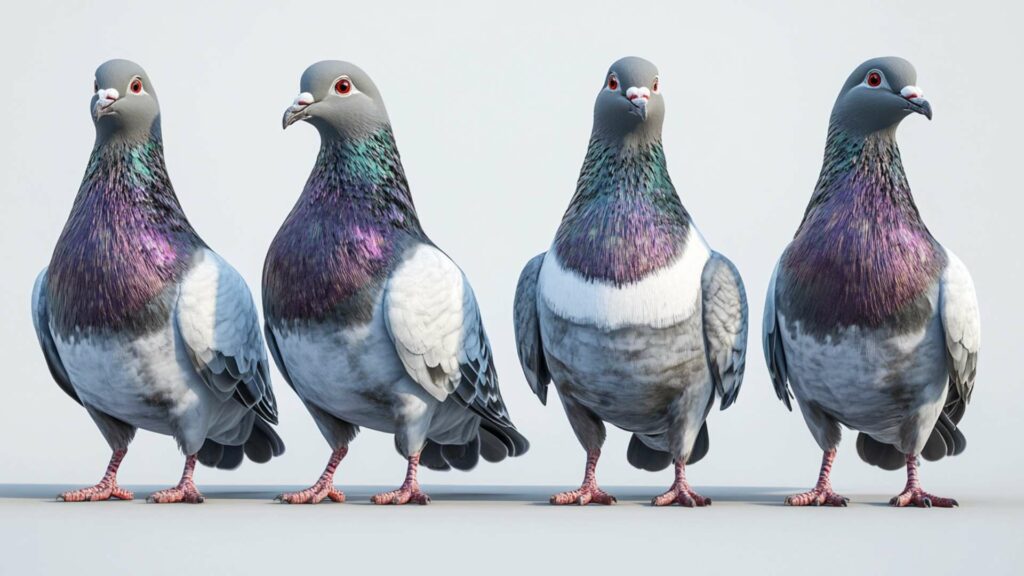
While pigeons may seem harmless or even charming from afar, their presence at bird feeders can pose some serious challenges. First and foremost, pigeons have an insatiable appetite and can devour large quantities of seed meant for other birds in no time. Imagine precious black oil sunflower seeds, specially chosen to attract delightful garden birds like finches and chickadees, disappearing into the gaping maws of these avian invaders.
Such an easy meal would undoubtedly leave our beloved backyard birds deprived of eating their rightful sustenance. Moreover, pigeons’ voracious feeding habits often lead to excessive spillage around the feeder area.
Fallen seed not only attracts more pigeons but also larger birds that prey on smaller species more birds. This disrupts the delicate balance we seek to maintain in our gardens—ensuring that all feathered visitors have an equal opportunity to partake in nature’s bounty without fear or competition.
Therefore, keeping pigeon populations under control is vital to preserving a harmonious environment for both resident and migrating avian species alike. So let us delve into a treasure trove of knowledge, exploring a multitude of methods to thwart these pesky pigeons and restore peace and tranquility to our humble bird-feeding domains.
Understanding Pigeon Behavior
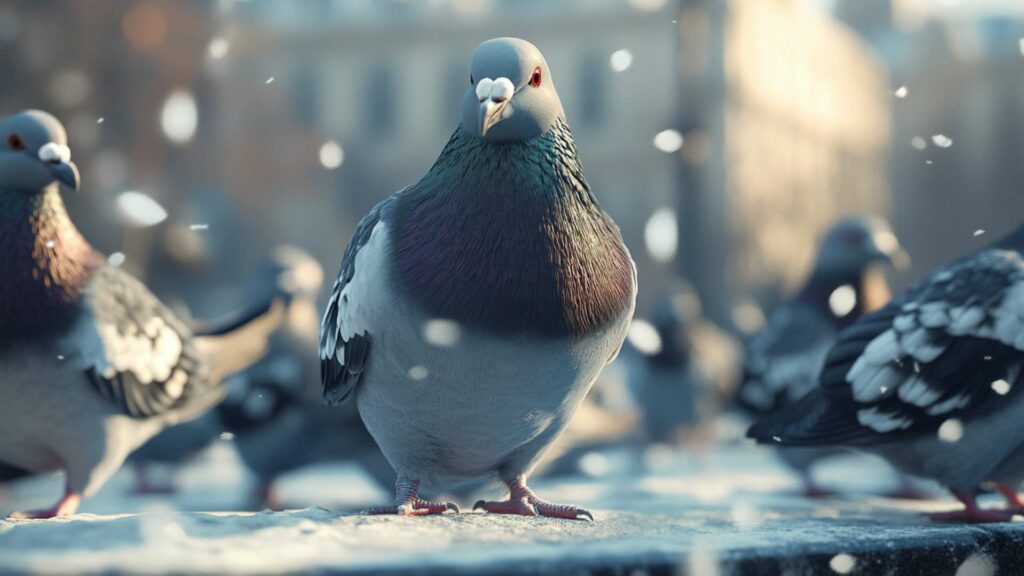
Pigeon Characteristics and Habits
Pigeons, often considered city dwellers, possess remarkable physical features that contribute to their adaptability. With plump bodies covered in feathered coats of various colors, usually gray or white, they are well-suited to diverse environments.
Their short legs enable them to walk gracefully on both rugged urban terrain and open grasslands. Additionally, pigeons possess keen eyesight that aids them in locating potential food sources from afar.
Physical Features and Adaptability
One of the pigeon’s most remarkable features is its beak. It is slender yet strong enough to crack open seeds like black oil sunflower seeds or consume cracked corn with ease.
This adaptability allows them to thrive on an assortment of food sources found in urban areas or gardens. Moreover, pigeons have an innate ability to regulate their body temperature, which allows them to survive extreme weather conditions.
Nesting and Roosting Preferences

When it comes to nesting and roosting preferences, pigeons exhibit resourcefulness in finding suitable locations for their homes.
They favor ledges on buildings or trees where they can create nests using twigs, leaves, feathers, and other easily accessible materials. Pigeons also appreciate places that provide a sense of security from predators while allowing them easy access to food sources like fallen seeds under bird feeders or spilled seeds from hanging bird feeders.
Understanding these characteristics and habits prevents pigeons provides valuable insight into why pigeons are drawn to bird feeders in search of sustenance. However, as conscientious backyard bird enthusiasts seeking a diverse array of avian visitors at our feeders, it becomes necessary to implement strategies that discourage pigeons while still facilitating the presence of smaller, more desirable bird species.
Identifying Attractive Factors for Pigeons at Feeders
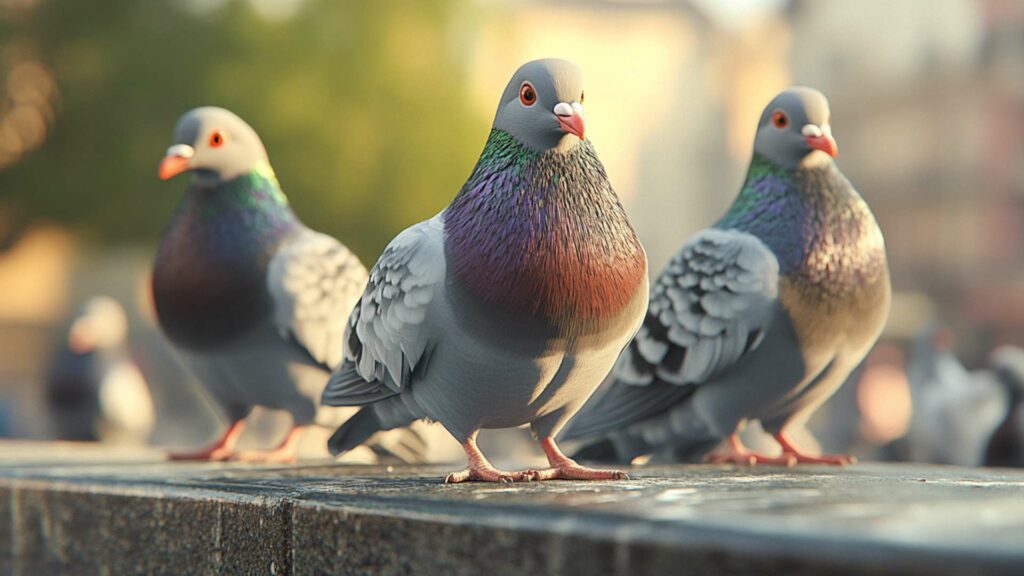
Types of bird feeders that attract pigeons
When it comes to pigeon-friendly bird feeders, there are a few types that seem to be particularly appealing to these feathered troublemakers. One such type is the open tray or platform feeder. These feeders provide a large, flat surface where birds can easily access the food.
While this design works well for ground-feeding birds like sparrows and doves, it unfortunately attracts pigeons too. The wide space and easy access make it an enticing buffet for these opportunistic eaters.
Another type of feeder that often invites pigeons is the ground-level feeder with spillage. These feeders are typically designed to accommodate birds that prefer feeding on the ground, such as thrushes and juncos.
However, their design often leads to spilled seeds and fallen food particles in abundance. Pigeons, being highly adaptable scavengers, are quick to seize this opportunity and flock to your yard for an easy meal.
Open tray or platform feeders
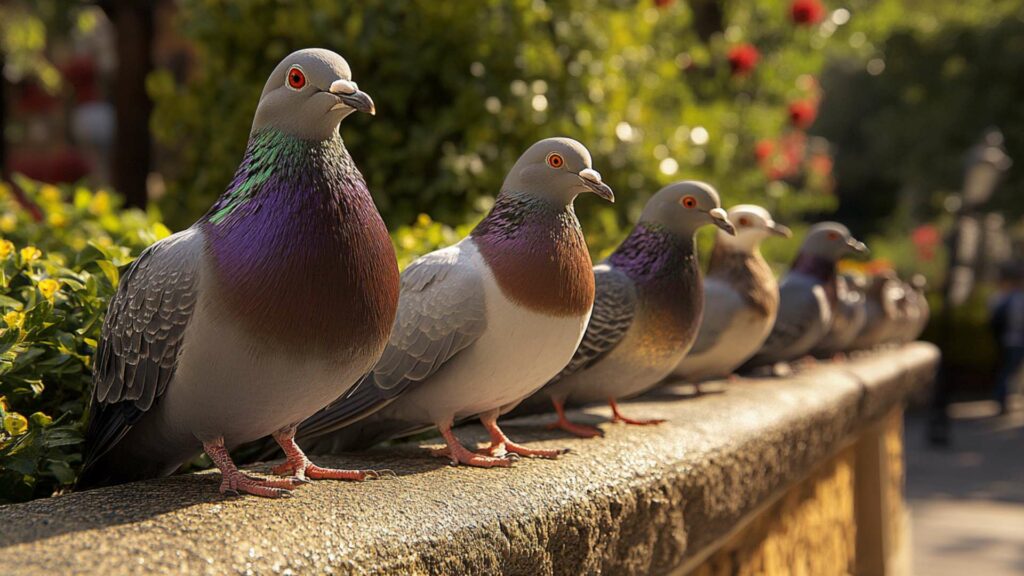
Open tray or platform feeders are popular among bird enthusiasts due to their versatility and convenience. They provide a wide surface area where multiple birds can perch at once and enjoy a meal together.
Unfortunately, this design also makes them attractive to pigeons who have no qualms about hopping on board for a feast. To discourage pigeons from taking over your open tray or platform feeder, you can try modifying its structure slightly.
Consider adding wire mesh around the edges of the feeding area so that smaller birds can still comfortably access the food while creating obstacles for larger pigeons attempting to land on it. This way, you create an environment more suitable for other non-pigeon backyard birds while making it difficult for those pesky pigeons to hang around.
Ground-level feeders with spillage
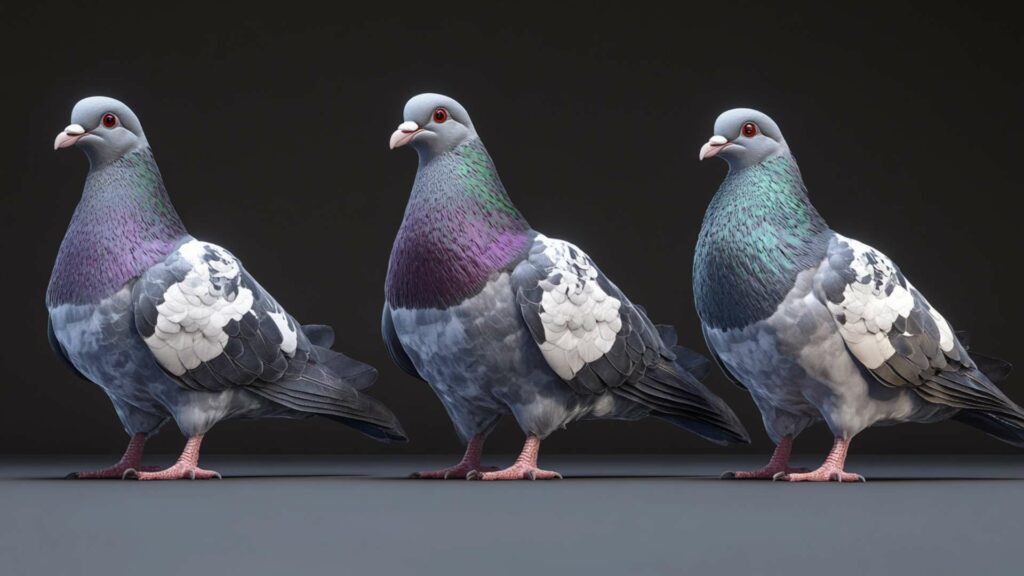
Ground-level feeders are designed to cater to birds that prefer foraging on the ground. They usually have a tray or a low platform where the seed is placed, making it easily accessible for ground-feeders like sparrows and mourning doves.
However, these feeders can inadvertently attract pigeons due to their spilled food. One way to mitigate this issue is by opting for pigeon-proof ground feeders and clean top-level feeders.
These specialized feeders come equipped with barriers or perches that only accommodate smaller birds while preventing pigeons from gaining access. Another option is to use bird feeders with adjustable seed ports or feeding trays, allowing you to control the size of the openings and limit access to larger birds like pigeons.
By being mindful of the feeder types that attract pigeons, you can make informed choices when selecting bird feeders for your yard. Implementing modifications or using pigeon-proof alternatives will ensure that your backyard remains a welcoming haven for other birds without turning into a pigeon hotspot.
Implementing Physical Deterrents
Spikes and barriers to prevent pigeons from landing on feeders

When it comes to deterring pigeons, spikes and barriers are valuable tools in your arsenal. These ingenious contraptions make landing on feeders a prickly proposition for those pesky pigeons.
Spikes are available in various sizes and materials, designed specifically to discourage large birds like pigeons from perching on your precious feeding stations. Type of spikes available in the market: The market offers a wide range of options when it comes to pigeon deterrent spikes.
Stainless steel spikes with pointed ends are a popular choice due to their durability and effectiveness. Plastic spikes can also be found, which provide a humane solution while being equally effective.
Choose the spike type that best suits your needs and budget. Proper installation techniques: Installing the spikes correctly is crucial for them to work effectively.
Begin by cleaning the feeder area thoroughly to ensure a secure attachment for the spikes. Place the spike strips at regular intervals along potential perching spots such as feeder poles or roofs, making sure they cover the entire surface area where pigeons frequent.
Ensure that there are no gaps for them to squeeze through by overlapping sections of spike strips if necessary. Remember, prevention is key!
Installing anti-perching devices on feeder poles or roofs

To keep those persistent pigeons away from your bird feeders, consider installing anti-perching devices that prevent them from finding suitable landing spots around your feeding stations.
Cage-style feeders: One effective option is using cage-style feeders with smaller openings that only allow smaller birds access while discouraging larger birds like wood pigeons or collared doves. These feeders create a protective barrier around the food, ensuring that pigeons cannot reach it.
Squirrel-proof baffles: Another ingenious solution is the installation of squirrel-proof baffles around feeder poles. These clever devices prevent squirrels and larger birds, including pigeons, from climbing up to your feeders.
The baffles act as an obstacle that deters pigeons from perching or reaching the feeders. With these anti-perching devices in place, you can enjoy watching backyard birds joyfully feasting while preventing pesky pigeons from causing trouble at your feeding stations.
Remember, implementing physical deterrents is just one aspect of keeping pigeons away from bird feeders. In the next section, we will explore visual and sound-based deterrents that further enhance your efforts to create a pigeon-free environment for all the birds to enjoy.
Utilizing Visual Deterrents
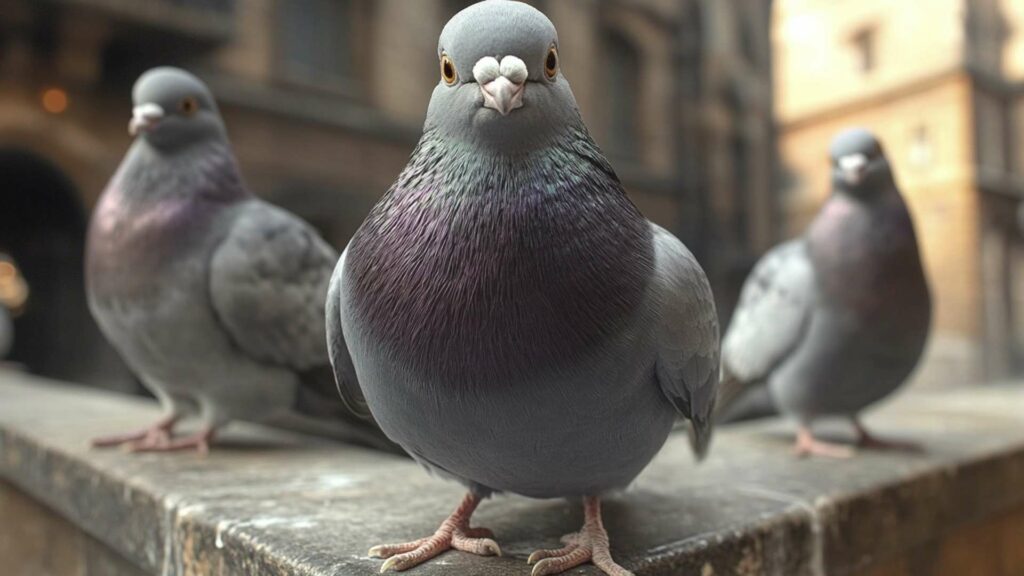
Scare tactics to discourage pigeons
Pigeons can be persistent little troublemakers when it comes to raiding bird feeders. To keep them at bay and stop feeding them, one effective method is to employ scare tactics that make the area around the feeder less inviting for them.
Hanging reflective objects near the feeder can create a visually intimidating environment for these pesky birds. Shiny CDs or aluminum foil strips suspended from branches or poles around the feeder add a touch of sparkle and movement that unnerves pigeons.
The flickering reflections confuse and startle them, making it uncomfortable for them to approach and enjoy their stolen feast. Another fantastic visual deterrent is using moving wind chimes or pinwheels near your bird feeder.
The gentle tinkling sound of wind chimes in the breeze creates an unpredictable soundscape that disrupts the pigeon’s sense of security. Combined with the spinning motion of pinwheels, which reflects light in various directions, these simple yet effective devices create an ever-changing visual and auditory landscape that deters pigeons from settling down near your bird oasis.
Hanging reflective objects near the feeder

Dangling shiny CDs or aluminum foil strips around your bird seed feeding station creates flashes of reflected light that send pigeons into a frenzy of confusion and unease. It’s like setting up a temporary disco party just for birds! Pigeons perceive these reflections as unpredictable movements threatening their well-being, causing them to think twice about invading your birdseed paradise.
Plus, it adds a touch of whimsy to your garden décor! For those who prefer a more elegant approach while scaring off unwanted feathered diners, hanging wind chimes can do wonders.
These melodic ornaments not only create soothing sounds but also function as visual deterrents due to their sporadic movement caused by gentle breezes or even slight nudges from other birds. Pigeons find it difficult to stay focused in an environment where tinkling chimes and spinning pinwheels create a cacophony of noise and light that disturbs their peace.
So, don’t let pigeons feast away from your bird feeders! By employing these visual deterrents, you can add a touch of sparkle and whimsy to your garden while keeping these persistent intruders at bay.
Employing Sound-Based Deterrents
Keeping Pigeons on Their Toes: Scaring Them Away with Sound
When dealing with pesky pigeons that just won’t take a hint, sound-based deterrents can be a valuable tool in your arsenal. These devices emit high-frequency sounds that are specifically designed to repel pigeons without causing distress to other birds or wildlife in your garden. Ultrasonic deterrents are particularly effective as they produce sounds that are outside the range of human hearing but within the sensitive range of pigeons.
The Science Behind Ultrasonic Deterrents
Ultrasonic devices work by emitting sound waves at frequencies between 20,000 and 100,000 hertz, which is well beyond what humans can hear. Pigeons, however, have more advanced hearing abilities and can perceive these high-pitched sounds as highly unpleasant or even painful. When they encounter these frequencies near your bird feeders, it creates an uncomfortable environment for them and discourages their presence.
Placement Considerations: When installing ultrasonic deterrents around your bird feeders, proper placement is key to maximize their effectiveness.
Firstly, consider the coverage area of the ultrasonic device you’re using. Different models have varying ranges, so make sure to choose one suitable for the size of your feeding area.
To specifically target pigeons while minimizing disturbance to other birds or wildlife nearby, position the ultrasonic device in close proximity to the feeder but angled away from areas frequented by smaller birds. This ensures that only pigeons within the immediate vicinity will be affected by the sound waves while allowing other feathered friends to enjoy their meals undisturbed.
By incorporating sound-based deterrents like ultrasonic devices into your pigeon-proofing efforts, you create an environment that discourages unwanted visitors without harming any garden birds or disrupting their peaceful coexistence at the feeder. Remember, employing a combination of deterrent methods helps to reinforce the effectiveness of each one, keeping those persistent pigeons away from your bird feeders and ensuring a more enjoyable feeding experience for all the birds that grace your garden.
Implementing Feeder Modifications
Adjustments to make feeders less accessible to pigeons
Pigeons are notorious for their ability to access bird feeders, often causing a nuisance for small birds. To deter them, it’s crucial to make some modifications to your feeders. One effective approach is to choose feeders with smaller openings that discourage pigeons from accessing the food.
Cage-style feeders work particularly well in this regard as they have narrow gaps between the bars, allowing smaller birds easy access while preventing larger pigeons from squeezing in. Another modification you can make is adding seed catchers or trays underneath the feeder openings.
Pigeons tend to be ground-feeders, and by a ground feeder and placing a tray or catcher below the feeder, you can prevent them from accessing spilled seeds on the ground. The seed catchers not only keep your feeding area clean but also make it harder for pigeons to get an easy meal.
Squirrel-proof baffles around feeder poles
In addition to keeping pigeons away from dropped bird food everywhere, many bird enthusiasts also face the challenge of deterring squirrels from raiding their feeders. Fortunately, there’s a solution that can address both issues simultaneously. By installing squirrel-proof baffles around your feeder poles, you create an obstacle that hinders not only squirrels but also larger birds like pigeons.
Squirrel baffles are typically dome-shaped or cone-shaped barriers made of sturdy materials such as metal or plastic. They’re designed to be mounted above and below the feeder pole, forming a physical barrier between pests and your birdseed supply.
With these baffles in place, both squirrels and pigeons will find it significantly more difficult (if not impossible) to reach the food source. By implementing these modifications and making your feeders less accessible to pigeons through cage-style designs and squirrel-proof baffles, you can create a more welcoming feeding environment for small birds while ensuring that pigeons are kept at bay as much food can.
Remember, maintaining clean feeders and regularly removing any spilled seeds will also discourage pigeons from hanging around. With these strategies in place, you’ll enjoy the sight of a diverse array of birds feasting at your feeders without the interference of pesky pigeons.
Feeding Seed Varieties Preferred by Garden Birds
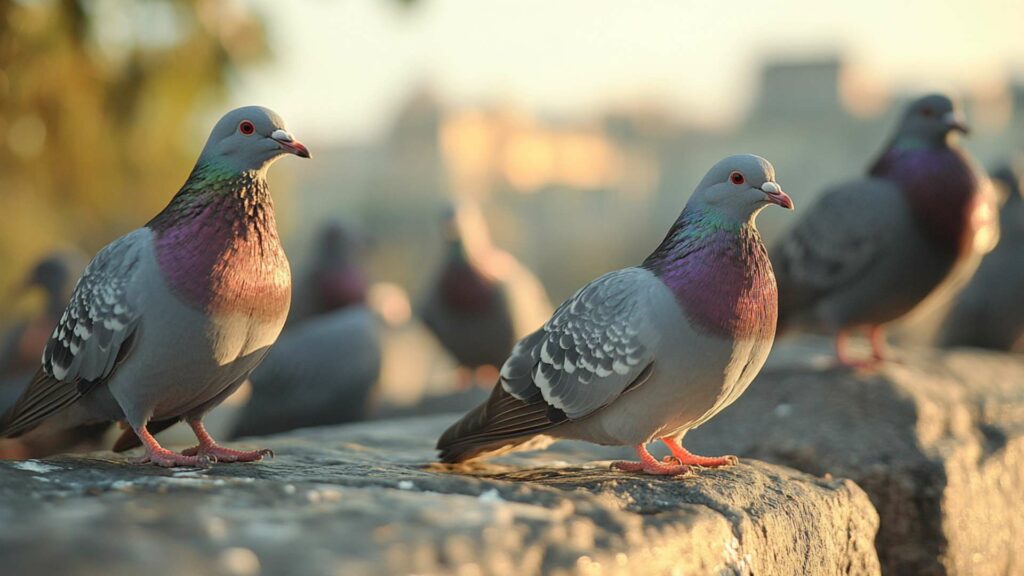
To cater specifically to the needs of garden birds and deter pigeons, it is crucial to offer seed varieties that are less appealing to these unruly visitors. Opt for seeds like nyjer (thistle), safflower, or millet.
These seeds are less likely to entice pigeons but still attract beautiful finches, cardinals, and other delightful avian companions. By providing seed options that are tailored to the preferences of smaller garden birds, you can create an inviting atmosphere while minimizing pigeon interference.
Feed Pigeons Separately With Pigeon-Specific Food
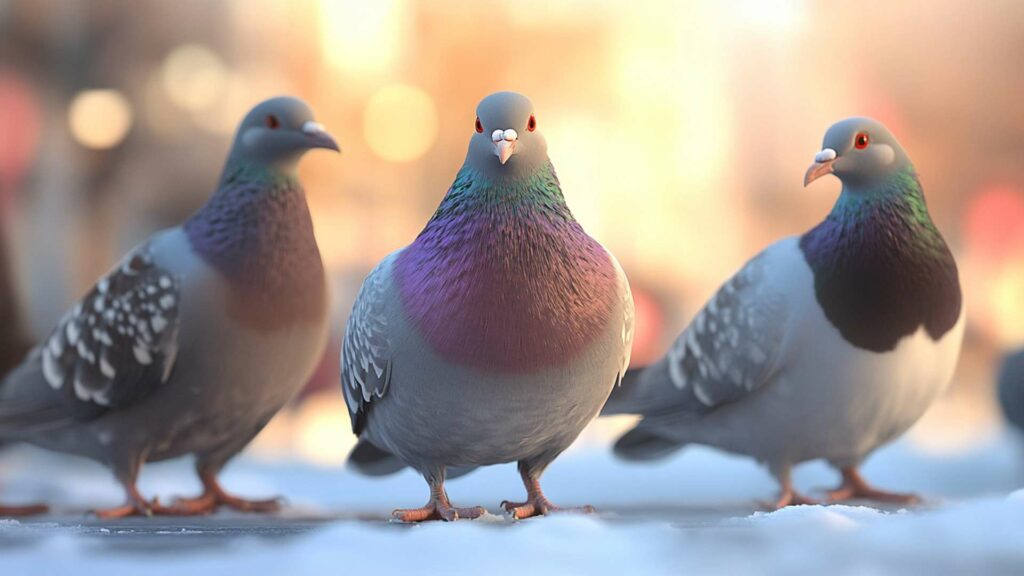
As compassionate bird lovers, we understand that even pigeons eat and deserve a meal. To avoid conflicts at your bird feeders and keep everyone satisfied, consider setting up a separate feeding station specifically for pigeons.
Use pigeon-specific bird food or blends or scatter leftover seeds on the ground away from your main bird feeding area. This thoughtful gesture ensures that both garden birds and pigeons can coexist harmoniously in your yard.
Create a Cage or Modify Your Bird Table
An effective long-term solution to stop pigeons from raiding your bird feeders is to create a physical barrier using a cage-style feeder or modify existing structures like bird tables. For cage-style feeders, choose models with smaller openings that only allow access for smaller garden birds but prevent larger birds like wood pigeons from entering. Alternatively, modify your bird table by adding small perches that only accommodate small-sized birds while deterring larger ones.
Conclusion:
By implementing these proactive measures and being mindful of the specific needs of garden birds and pesky pigeons alike, you can create an environment where everyone can enjoy their meals without conflict. Remember to provide seed varieties favored by garden birds, keep feeder birds and pigeons separately, and consider using physical barriers like cages or modifying existing structures to deter pigeons.
With a little effort and consideration, you can maintain a bird-friendly yard that encourages the presence of delightful songbirds while keeping those pesky pigeons at bay. Embrace the joy of feeding and watching your feathered friends thrive in your garden!
Prevent Pigeon Nuisances with D-Termination: The Leading Pest Control Service in Las Vegas!

If you’re contending with pigeon concerns, D-Termination has the solution. Our team of specialists excels in pigeon deterrence and the restoration of cleanliness and integrity in your surroundings. Bid farewell to pigeons by choosing D-Termination for highly efficient pest control today!
Reach out to us at 702-919-6310 or visit dtermination.com to schedule your pigeon control service and regain your space from these bothersome pests.
Frequently Asked Questions:
To remove pigeons while welcoming other birds, use pigeon-specific deterrents like netting or spikes.
Pigeons are often averse to loud noises, reflective objects, and motion-activated devices.
You can deter pigeons from your bird feeder by using pigeon-proof feeders or repellents.
The best pigeon deterrents typically involve physical barriers like spikes, netting, or scare tactics.

